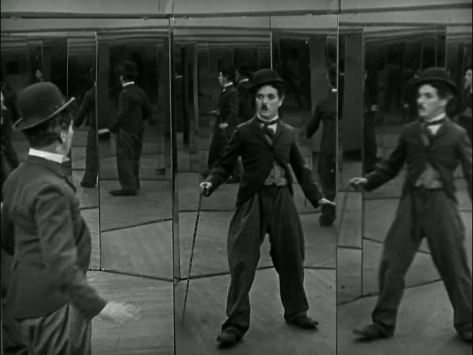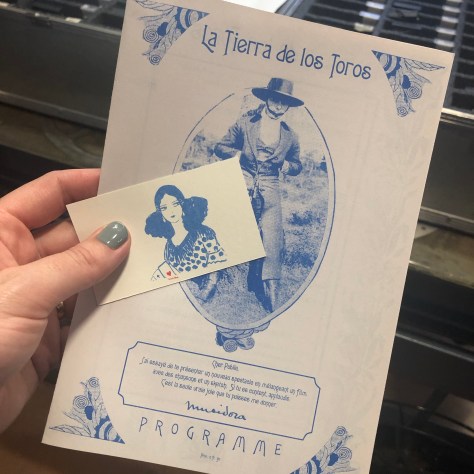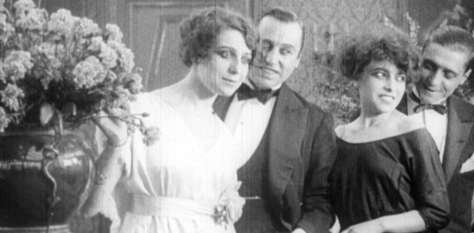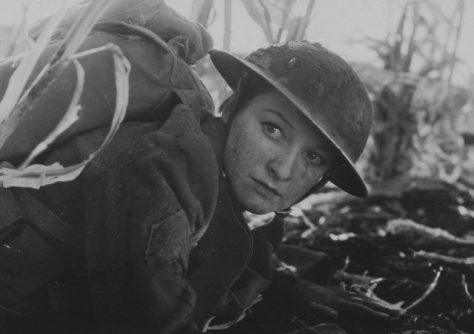Buongiorno! I have just returned from a week in Bologna and while sadly I have no tan to show off, I did see a lot of silent films while I was there. What else is there to do in Italy?
As you may know, I was at Il Cinema Ritrovato last week – the international festival of archive cinema par excellence. You can read my tips for doing Ritrovato right here, but this post is all about the silent gems I saw while I was there.
First: a disclaimer. I approach Ritrovato like an omnivore, tasting a little of everything, talkies and all, so this is not an exhaustive report of the silent offering, just the ones that I especially enjoyed.

1928 and all that
Let’s deal with the giants first: Buster Keaton’s freshly restored The Cameraman (1928) and Charlie Chaplin’s The Circus (1928) won a flock of new converts at grand open-air screenings in the Piazza Maggiore. Especially the latter, which I think is one of the very finest of all the silent comedy features. Watch out for the Criterion edition later this year, with a booklet essay by your humble scribe.

Meet Musidora
For me, the most fascinating strand of silent programming was that devoted to actor, director, archivist and icon Musidora. How wonderful to watch episodes of Les Vampires in a packed cinema with live music. But how much more wonderful to see Musidora either parodying her Irma Vep character or playing someone entirely different in a collection of short films and extracts that accompanied screenings of the classic Feuillade serial. What I found most revelatory were the films she herself directed. I loved enjoyed the Spanish melodrama Soleil et Ombre (1922), which was screened in the Piazzetta Pasolini on a carbon arc projector with beautiful accompaniment by Stephen Horne: a vividly composed, brisk-paced romance with Musidora playing two lead roles. Even more wild was La Tierra de Los Toros (1922-4), which had a more surreal, comic element (if anything, this is her Sherlock Jr) and was shown at the festival in a mixed-media show that combined live performance and projections with the film. I was enthralled.
As part of this strand, crossing over with another devoted to Georges Franju, we saw his surrealistic homage to Feuillade Judex (1963) – a true cinephile joy, but a slightly poignant one as its wonderful star Edith Scob had died just a day or so before.

One hundred years ago …
The Cento Anni Fa strand of Ritrovato has caught up with 1919, so we’re entering rather more “modern” territory now. The programme leaned heavily on German cinema and was more or less resistant to the lure of Hollywood – I wonder if that will continue when we enter the 1920s next year. Why not? There were a few classics on the list that I didn’t rewatch (so many things to see), including Herr Arnes Pengar, Praesidenten, Back to God’s Country and Different From the Others, but I still made time for some first viewings. My favourite by far was a film by Augusto Genina, who was profiled in the festival last year I think: La Maschera e Il Volte is a black marital comedy about infidelity and murder that was as fresh and audacious as anything you could hope to see today. Excellent accompaniment from Daniele Furlati made this a wonderful screening – one of my best of the fest.
I also enjoyed slipping into the cool of the Basement of the Modernissimo cinema to catch an episode or two of a rather spicy Italian serial – I Topi Grigi or The Grey Rats.

King silence
One of my favourite (mostly) talkie strands was that devoted to Hollywood director Henry King – he of Tol’able David (1921) and Stella Dallas (1925) fame. Neither of those showed here this year, but there were a clutch of his silents on show. There was Twin Kiddies (1917), an endearing mistaken identity romp starring Baby Marie Osborne and King himself, and also the disaster western The Winning of Barbara Worth (1926). The screening that knocked me off my heels was the surviving version of She Goes to War (1929). This fragmentary collage is the 1939 re-release and it’s not quite complete but it is rather stunning. There’s little exposition, but this much is clear: Eleanor Boardman takes her boyfriend’s place in the trenches and experiences the horrors of modern warfare. The scene in which a tank crosses a burning battlefield is just brilliant, if gruelling, and Boardman’s horrified reaction shots increase the tension. There’s some strange material too when her fellow soldiers recognise her gender under-fire: a potent mix of misogyny, shell-shock and nervous laughter.

Restored glory
Ritrovato is the best place to see new restorations first, and there were some beauties this year. It’s hard for anything I saw to compete with the wonders of Jean Epstein’s gorgeous, lyrical Finis Terrae from 1929 (which Duncan Carson wrote about beautifully for the site a few years back). The imagery here is so beautiful that it’s hard to focus on the plot, about a disagreement between seaweed pickers that risks fatal consequences. I was lost in the sky, and the sea spray instead – which are pin-sharp in this new Gaumont restoration – and in Stephen Horne’s exquisite music too.
Another lyrical beauty, this time from 1919, was Mauritz Stiller’s Song of the Scarlet Flower, starring Lars Hanson. It’s a rake’s progress tale, as Olof (Lanson) learns to move on from his days as a wild rover and earn the love of the woman he truly admires. It’s based on a popular book by Finnish writer Johannes Linnankoski, and this truly is a novelistic film, which balances spectacle (an astonishing log-walking stunt) which psychological acuity. Hanson is remarkable as ever, especially in haunting scene in which he confronts his demons in a tavern mirror. Happily and unusually, this also comes with a new recording of the original score, which while occasionally repetitive, certainly added to the lyrical classicism of this wonderful film.
Fittingly, I closed my festival with a glimpse of more beautiful restoration work: the kaleidoscopic Gaumont Chronochromes from 1912 and 1913 that accompanied the Saturday night screening of Le Plaisir in the Maggiore. To see the splendours of Venice or the delicate petals and deep hues of a floral bouquet in such vivid detail on such a grand screen – well, it’s a silent cinephile’s dream come true.

- Read more about all these films in the beautiful festival catalogue.
- This year I was once again a judge on the Il Cinema Ritrovato DVD Awards – you can see a full list of our winners here.
- The 2020 dates are out: the next Il Cinema Ritrovato runs 20-28 June 2020.
- Silent London will always be free to all readers. If you enjoy checking in with the site, including reports from silent film festivals, features and reviews, please consider shouting me a coffee on my Ko-Fi page

I loved reading this recap, Pam!
Ah, I’m sorry to miss screenings of Musidora, she’s one of my favourites. What a huge talent. Of her directorial efforts/Spanish films I’ve only seen Soleil et ombre – her crazy blonde wig is good value. I hope that I get the chance to see La tierra de los toros someday.
The 1919 section sounds great too – I’d dearly love to see that Genina, with my old pal Italia Almirante Manzini!
Song of the Scarlet Flower is another one that I’ll look out for.
Here’s hoping I’ll back back in Bologna in the next few years, we’ll have a spritz aperol together. 😉
Oh yes, you were much missed!
thanks for this round-up!
My pleasure!
Reblogged this on Only Me.